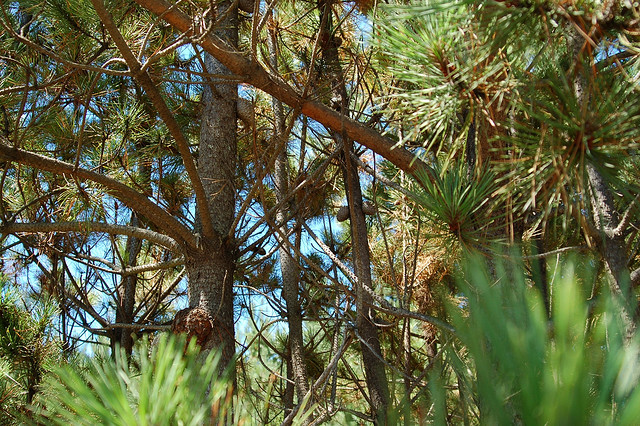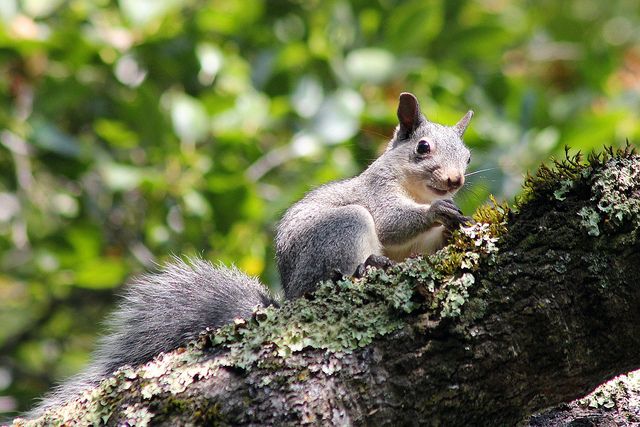Hiking in Point Reyes’ mature forest, I’m sometimes startled by loud barking and thumping from the canopy. Then a good-sized animal with a plumed tail that seems even bigger will appear, shaking with apparent rage and even making threatening movements down the tree toward me. Sometimes others join in. It can be intimidating, although it comes from a creature that usually is associated with Bambi.
It is sciurus griseus, the western gray squirrel, a very important presence in the Seashore. Tree squirrels can seem marginal in cities, but they have a vital ecological role in forests. Their harvesting and caching of cones and seeds, many of which they forget to reclaim, plants untold numbers of trees. At Point Reyes, western grays are the only tree squirrels that play this role.
They are big squirrels, exceeding or rivaling in size the introduced eastern gray and fox squirrels of Bay Area cities, and easily distinguished from them by their fur, which is pale gray without the other species’ orange or rusty fringes. Unlike them, they don’t take to civilization, much preferring wild forest to urban areas. They are aggressive not only with hikers but with each other. Males fight for territory and females; even females get roughed up in the process. Boldness can have its downside: I once saw a goshawk flying away with one, and other predators such as bobcats catch unwary ones.

Western grays occur in pine and oak forests throughout much of the West Coast up to about 6,000 feet. They are threatened in parts of southern California and the Northwest where logging and urbanization have destroyed their habitat and introduced species compete with them. They are not considered at risk in Point Reyes so they have been studied less than species of concern like the aplodontia, commonly known as the mountain beaver.
Western grays are known to gnaw open bishop pine’s cones for the seeds, but the importance of this in their overall diet is not clear. Point Reyes’ many oaks offer an easier food source. In itself, the squirrels’ seed caching is not considered a vital factor in bishop pine reproduction. Still, they may be the only local animal able to open the cones, which seem too tightly sealed for jays or other seed caching species.
Western grays are mobile, sometimes migrating for miles across open valleys in search of good seed crops, so, the 1995 Vision Fire in Point Reyes probably killed fewer of them than of more sedentary rodents like apolodontias. Things might have been different if the fire had occurred during their spring and summer breeding season, since the young remain in their domed leaf nest for six months. The fire’s destruction of mature forest must have had a greater long-term impact on their population.
Whether the squirrels are taking advantage of the burned area’s thousands of cone-bearing bishop pine saplings is unclear—I haven’t seen any there. Despite their bravado, Western grays prefer the safety of big trees, and it may be awhile before many venture into the new stands.





